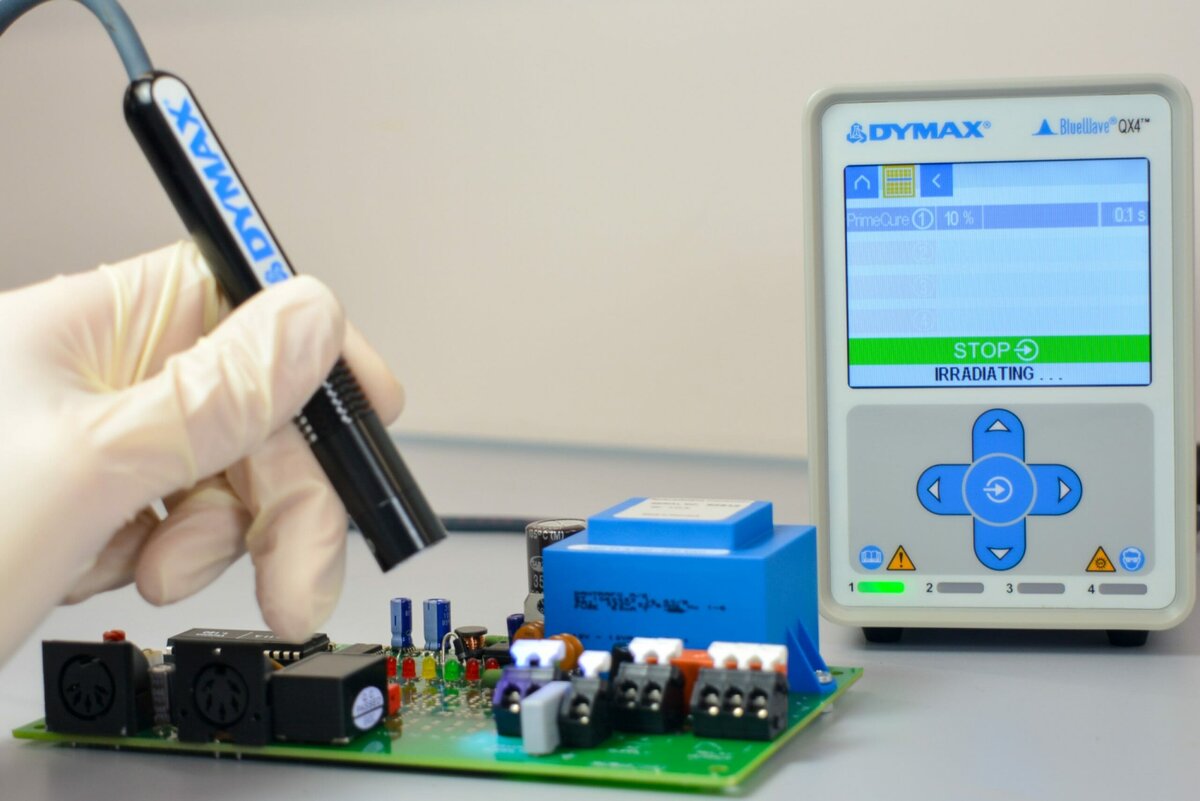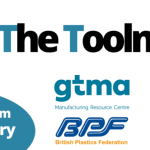~ The considerations for establishing ROI in a UV bonding process ~
Light curable adhesives have applications in the assembly of products in medical devices, automotive, aerospace, consumer electronics, appliances and more. The materials provide a way to reduce costs without sacrificing product quality. Once you have established criteria for performance and the application requirements to determine if a UV curing material might be suitable for your application, there are multiple considerations to get the best out of your investment. Here Simon Gibbs, Product Specialist at adhesives supplier Intertronics, shares insight on achieving return on investment (ROI) from a UV curing process.
When designing a UV curing process, it is critical that you understand both the process and how it can deliver on your objectives, so that you can choose a material and equipment that meets your requirements. It is typical practice to narrow down the adhesive choice first, and then pair your material with a curing lamp with the correct spectral output, intensity and size. A robust process also requires comprehensive testing to prove process capability and ensure that the parts of the system work optimally together.
There are several factors governing the ROI of a UV curing investment, including financial, environmental, materials, resources, quality and process considerations. UV curing equipment may be a larger upfront investment than other available technology, so it is important to understand the process and how you may be able to achieve financial savings over time.
Enhancing quality and minimising risk
UV curing materials offer good toughness, durability, shock and moisture resistance and structural integrity. As well as the properties of the adhesive, potential quality benefits can come from the UV curing process, which has characteristics that enable manufacturers to reduce chances of defects due to improper dispense or cure. Firstly, UV curable materials cure on demand in seconds. Manufacturers can therefore control the process so that cure is only initiated when the substrates are correctly positioned.
UV curing materials can easily be combined with technology that makes in line inspection easy, such as See-Cure technology, which changes colour once the material has cured, building a visible safety factor into the assembly process. This can be further combined with Ultra Red™ fluorescence technology to streamline post-cure bondline inspection. This technology means the adhesive remains clear until exposed to low-intensity black light, at which point it fluoresces bright red, particularly useful when bonding plastics that naturally fluoresce blue.
The potential improvement in yield and ability to identify and remove defective products can help deliver a good ROI, although it is difficult to quantify the confidence and subsequent reputation gained by both you and your customers when you consistently deliver high-quality products.
Reducing costs
The ability to achieve a near-instant light cure means manufacturers can increase their production rates and reduce labour costs. Compared with that of a two-part material, the process can be simpler. For two-part products, the extended cure time will require more fixtures and space in the factory. A thermal cure may be required to speed up the process and reduce WIP, with the extra energy of an oven and load/unload overhead. The working life of the mixed two-part product needs to be managed to prevent excess waste or application equipment blockage.
UV curing adhesives may present inherent material savings when the process and waste is taken into consideration. For example, leading adhesive-manufacturer Dymax compared the cost of a UV curing adhesive with a two-part, urethane adhesive that had a lower cost per gram. Once the higher material usage, as a result of purging, improper mixing and general waste in the mixing system, was considered, the material cost benefit for the two-part material vanished.
UV curing adhesives are 100% solids, include no solvent carrier and produce no volatile fumes; usually, there is no requirement for special venting in the facility.
Improving efficiency and productivity
UV curing adhesives provide fast cure times that enable shorter cycle times and reduced work in progress. Their small process footprint means space can be freed up for other tasks — there is no racking or heating required, saving time and floor space.
UV curing processes are well suited to automation, meaning the manufacturer can benefit from the typical automation benefits such as improved repeatability and precision, and the fact that robots do not get tired or need breaks.
Two different UV technologies
Part of the ROI calculation will be the cost of a UV curing lamp. For optimal results and to get the full benefits of the technology, an industrial unit with the correct output is required. It is always a false economy to use UV sources which do not meet a minimum recommended intensity or output non-optimal wavelengths — incomplete cure being the most obvious result. A good supplier will work with you to choose and evaluate appropriate curing equipment.
There are two types of UV curing lamp, based on fundamentally different technologies. The traditional light source used during UV curing is a mercury-based arc lamp, which emits broad spectrum light. The alternative is an LED UV curing lamp, which differs by emitting narrow spectrum UV light.
For manufacturers establishing new processes, LED UV curing is usually the recommended option. The range of adhesives suitable for curing with narrow spectrum LED UV light is increasing all the time. Process control is much easier with LED UV lamps, as they offer more consistent output — up to or exceeding 20,000 hours. On the other hand, mercury arc lamps have a typical life of 2,000 hours, degrading throughout this period. LED curing lamps have no bulbs to change, which removes the need to pay for replacements. They run at lower temperatures, helping to avoid thermal rise and substrate damage.
LED lamps have no warm-up or cool-down time, so the manufacturer can turn them on, as and when needed, using them immediately. In contrast, the warm-up and cool down time associated with a broad spectrum lamp means that manufacturers leave them running all day, with the increased power consumption. The 20,000 hour life of an LED curing lamp therefore represents 20,000 hours of curing time (in practice many years), whereas the lifespan of a mercury arc lamp refers to running time.
LED UV curing lamps are attractive because of better process control and low running costs. However, if you are looking to switch from a mercury arc lamp to an LED UV lamp, it may not be as simple as a straight swap. It is important to ensure that your adhesive cures effectively with the narrow spectrum output; some, especially those designed for broad spectrum cure, will cure with unexpected characteristics.
If you are already operating a mercury arc process, you may need to consider how often you are changing your bulb, the price of the bulbs, the downtime for bulb changes, and the cost of monitoring the output of the bulb, and calculate whether upgrading to an LED curing lamp will deliver an appropriate ROI.
For manufacturers who can change their adhesive, consider whether you are trying to reduce costs, solve a technical problem, or both. Because switching adhesives may require revalidation, it is typically done by businesses with a strong commercial or technical drive for the change. Some examples may be supply issues, a change in the regulatory environment, or a product update involving new substrates or bondline design.
Conclusion
A UV curing adhesive can deliver good return on investment. It is important to take a holistic view, considering productivity, quality, yield, throughput, energy, H&S and similar factors in the calculation; material and equipment costs are often offset by these other benefits and the resultant savings. The materials offer fast, on demand curing, and can be easily combined with automation to further improve throughput and yield. Whether you are considering UV curing materials for a new or existing process, it is important to consult with someone who can talk you through the specifics.
For more information on establishing a UV curing process, visit https://www.intertronics.co.uk/product-category/uv-equipment/, where you can access our top tips for getting the best from your UV curing process.





